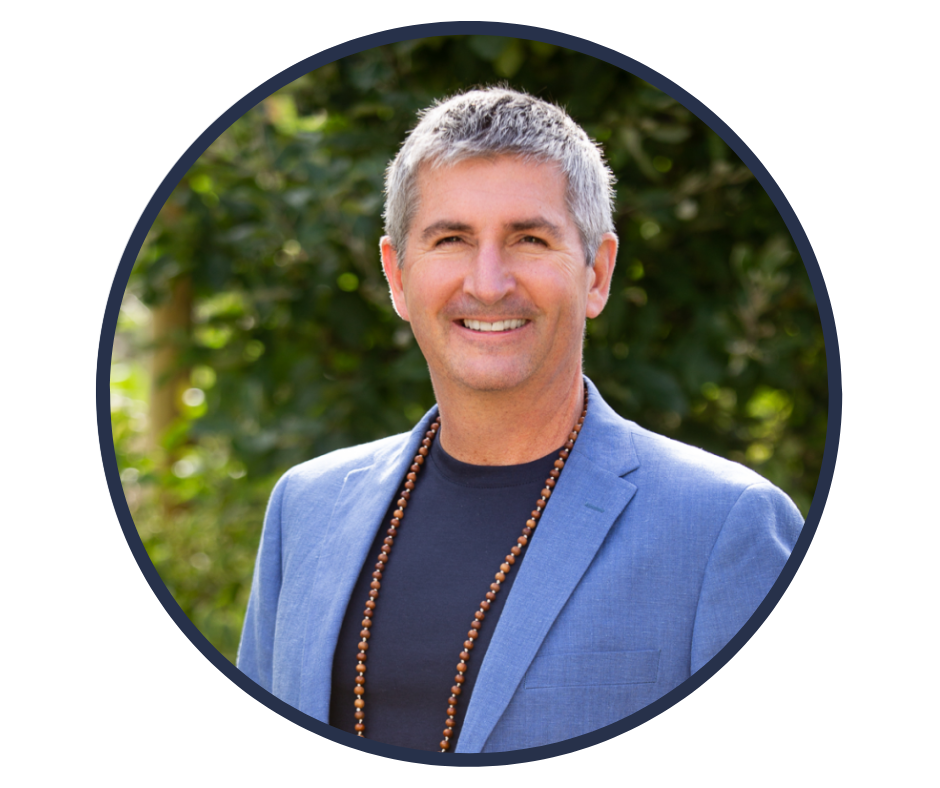Yoga and Science in Pain Care - Can We ‘Breathe’ Our Pain Away?
By: Vidhya Gopalakrishnan, PhD, RYT-500, C-IAYT ∙ Estimated reading time: 7 minutes
By: Vidhya Gopalakrishnan, PhD, RYT-500, C-IAYT ∙ Estimated reading time: 7 minutes
This is the 8th blog post in a series based on the Yoga and Science in Pain Care Book Club, a 15-part course based on the book by the same title, by Neil Pearson, Shelly Prosko, and Marlysa Sullivan. You can find the blogs corresponding to Chapter 1, Chapter 2, Chapter 3, Chapter 4, Chapter 5, Chapter 6, and Chapter 7.
Breath gives life
Breath, as we all know, infuses us with life. When the breath stops, life stops. Breathing is a natural process of taking air in and letting it out at a rate of approximately 15 breaths a minute, 900 breaths per hour, and 21,600 breaths per day. There is nothing more essential for our health and well-being than breathing. The rate of breathing has also been associated with longevity – at the rate of ~15 breaths/minute, the human lifespan is around 80 years. Dogs with a higher rate of breathing (~25-30 breaths/min) have a lifespan of 10-15 years and whales that breathe at a rate of less than 5 breaths per minute live to over 100 years.
More specifically, does breathing help with pain management? How are breath and pain related? Can one ‘breathe pain away’? Could one develop a ‘breathceutical’ or ‘pranaceutical’ for pain management?
Lamaze breathing is a well-known practice that is used for labor pain management during childbirth. Likewise, are there breathing practices that are effective for chronic pain? What does the research and clinical evidence say? These are some of the important topics and questions that Shelly Prosko very thoroughly explores and discusses in chapter 8 of the book “Yoga and Science in Pain Care, titled “Breathing and Pranayama in Pain Care” and the companion course on Embodia.
Click here to learn more about Chapter 8
of Yoga and Science in Pain Care
Breathing, breath awareness, and Pranayama
Breathing is a natural but complex process that is enabled by our respiratory system. In addition to keeping us alive by moving air in and out of the lungs for gas exchange, breathing has several other important functions that are nicely summarized in the chapter. It is important for the functioning of our vocal cords, our sense of smell, and our physiological systems such as circulatory, digestive, and autonomic nervous systems. It is also important for our posture, balance, spinal mobility, and for optimal movement. In addition to these physiological and biomechanical functions, breathing affects and is affected by other layers of our existence such as moods, emotions, mental state, and the ANS. Breathing can thus be a pointer to the physical and psychological condition of our body.
Importantly, breathing can also influence and be influenced by pain.
Respiration is thus “a complex psychophysical system with multiple functions. Breath has the power to influence all koshas and all koshas can influence breath.”
A unique feature of our breathing apparatus is that it is both involuntary and voluntary and we have the powerful ability to convert it from involuntary to voluntary. The catalyst for this is breath awareness followed by breath regulation. Any form of breath regulation or control needs to begin with breath awareness. These concepts are well articulated in the chapter and discussed in the course webinar along with a guided practice.
Breath awareness, as the name suggests, is simply the act of observing the breath without attempting to change anything and noticing qualities such as the rate, pace, and depth of breathing, length of inhale and exhale, any pauses in between, qualities of the breath (smooth or choppy, soft, or loud, etc.), how it moves in the body and sensations experienced.
As Prosko, Sullivan, and Pearson discuss in the chapter course, a breath awareness practice is a “no expectation practice” in which a practitioner “does not have to do anything!” Breath awareness practice is simply a way to focus attention, become present, connect to a point of safety within, and create space for observation and discernment.
It is a “gentle, kind, safe practice that sets an individual up for success”.
Please take a few minutes to enjoy this beautiful, guided practice from the course.
Guided breath awareness practice with Shelly Prosko
From the course on Embodia, Breathing and Pranayama in Pain Care, based on Yoga and Science in Pain Care Chapter 8.
Pranayama is the fourth limb of Raja yoga and means control or regulation of ‘prana’ or life force, loosely translated as breath regulation practices. (Pranayama and breathing practices are thus used interchangeably in the chapter). These practices facilitate voluntary control of breathing and thereby control of the respiratory and other physiological systems.
The process of breathing involves three components – inhalation, exhalation, and the pause in between (Saraswati, 2016). The various breath regulation or pranayama practices are obtained by modulation of these three components.
In 2.50 of the Yoga Sutras, Patanjali refers to nine variables that can be manipulated and controlled:
- Bāhya Ābhyantara Stambha Vṛttiḥ
- Deśa Kāla Saṁkhyābhiḥ Paridṛṣṭaḥ
- Dīrgha Sūkṣmaḥ
i) Exhalation, ii) inhalation, iii) breath hold (suspension of breath), iv) place of control of breath (such as nostril, throat, etc.), v) time or duration of each component (inhale, exhale, hold), vi) number of breaths (pranayama count), vii) done with awareness, focus, and attention; vii) long (length of breath) and viii) subtle, soft, smooth (quality of breath).
Prosko refers to similar variables such as rate, length, depth, nostril dominance, nasal versus oral, use of sound (brahmari), force (kapahalabhati, bhastrika), resistance (ujjayi), mechanics (3-part breath), position, and use of imagery.
Given the number of attributes of the breath that can be varied, a vast number of permutations and combinations of breath regulation practices are available for practice, providing a repertoire of options for customization to a given individual and situation. I would recommend interested readers to refer to books such as ‘Prana and Pranayama’ (Saraswati, 2016) for details.
Pain can impact breathing and breathing can influence pain
Hyperventilation (overbreathing) and upper chest breathing are reported to be the most predominant breathing pattern disorders that correlate to pain. Please refer to the book chapter for a nice summary of breathing pattern disorders.
An interesting research finding mentioned in the chapter showed that hyperventilation was also associated with the anticipation of pain without a pain stimulus being present suggesting that pain-related changes in breath pattern may be influenced by emotions such as fear, panic, and loss of control that develop in anticipation of pain triggering events.
Are yoga breathing practices beneficial for pain
Some of the more commonly used breath regulation practices in pain care, according to Prosko, are three-part (dirgha), bee (brahmari), alternate nostril (nadi shodhana), and victorious (ujjayi) practices. Slow-paced breathing (SPB) and deep slow breathing (DSB) are reported to be the most used in pain care and research.
The available research to date suggests a beneficial effect of slow deep breathing on pain. However, there are gaps in the research and the evidence for chronic, persistent pain is not conclusive. Despite the limitations in the available objective evidence, clinical and subjective experience show that breathing practices can be very beneficial for pain management. As Prosko writes in the chapter, she has seen the beneficial effect of breathing practices on pain for over two decades of her practice. Simple movement practices synchronized with the breath, breath practices combined with visualization, sound vibrations, and/or with intention setting are various accessible and generally safe tools in the ‘breathing and pranayama practices for pain care’ tool kit.
Pain is a subjective experience with sensory and emotional components, and it depends on the evaluation of many kinds of input such as sensing things inside the body (felt sense) and outside (environment), memory, feelings, emotions, and thoughts. Thus ‘finding a one size fits all’ practice that can be proven in controlled clinical trials is a tall order in my humble opinion. As Prosko rightly articulates, practices must be personalized to meet the individual needs of a person. Not having a prescriptive breath treatment protocol allows us, as yoga therapists, to experiment with and expand our options and explore if/why a practice is not working at a given time and replace it with another.
Practical application
Prosko’s guided practices (in the 'Introduction' and 'Practical Demonstration' segments of the course) as well as the discussion about breath 'awareness' versus breath 'regulation' and the role each type of practice plays in the clinical practice of pain care was eye-opening for me.
Breath awareness can be used to gain insight into a person's pain and needs and breath regulation practices can be used to self-regulate and change the pain experience. This sounded like Western medicine’s companion diagnostic and therapeutic drug components of precision medicine to me, with breath awareness serving as a ‘diagnostic tool’ and breath regulation as the ‘treatment’.
My ‘aha’ moment came when I personally experienced the power of breath for the ‘diagnosis and management’ of my pain. I developed a nagging upper back pain that was interrupting my activities of daily living, including my routine yoga practice. I am resistant to the use of painkillers unless necessary and try to grind through the pain. It was during this time that I listened to Prosko’s “Breathing and Pranayama in Pain Care” lectures on Embodia in which the penultimate lecture is devoted to a wonderful practical demonstration. In this, she explores a breathing practice called three-part breath in multiple positions: supine, prone, on all fours (tabletop), etc. The same breath practice performed in different positions produced very different experiences and I felt as if I was using my breath to perfuse different areas of my body leading to a ‘diagnostic examination’ of my pain experience (like a physician’s stethoscope examination). When I practiced some of the breath-coordinated movement practices with intention and awareness, I experienced a felt sense of my breath penetrating into and massaging the painful, tight, constricted parts of my body and relieving some of the back pain symptoms I was experiencing.
It was an amazing revelation, and my experience provided the answer to the question in this blog title: “I could breathe my back pain away”! Granted that this was an N=1 experiment and will not qualify as research or clinical evidence for the claim but it did provide a basis for the point Prosko makes regarding the experiential and clinical relevance of yoga breathing practices in pain care despite the limitations and gaps in the research.

The bottom line is that yoga breathing practices can be beneficial for pain management, are highly accessible, always available, non-invasive, inexpensive, and safe with no significant downside and their incorporation in pain care would offer enormous value. As a yoga practitioner and therapist, I strongly believe in the power of breath over body and mind, and pranayama plays a significant role in my practice and teachings. Breath is the bridge that connects body and mind and breathing practices are, therefore, an ideal way to access both.
Click here to learn more about Chapter 8
of Yoga and Science in Pain Care
or
Click here to view the complete series
References:
- Pearson, N., Prosko, S., Sullivan, M. (2019) Yoga and Science in Pain Care: Treating the Person in Pain. Jessica Kingsley Publishers
- Yoga and Science in Pain Care: Chapter 8 online course. Feb 2021. Embodia.
- Saraswati, S. N. (2016). Prana and pranayama (p. 116). Yoga Publications Trust Munger, Bihar India.
___
Date published: 2 Nov 2023
Last update: 2 Nov 2023

PhD, RYT-500, C-IAYT
Vidhya Gopalakrishnan is an executive in the pharmaceutical industry with more than 25 years of experience in research and development, program management, and leadership. A student and practitioner of yoga for more than 15 years, she holds a Master of Science in Yoga Therapy. She is passionate about a holistic approach to health and wellness and tries to integrate her scientific training and pharmaceutical development experience into her yoga therapy teachings. In addition to private sessions, she has taught workshops focused on yoga therapy for menopause management, endocrine and cardiovascular health, and pain.
Dr. Gopalakrishnan received her doctorate in Bio-Organic Chemistry from the National Chemical Laboratory, Pune, India, and an additional master’s degree in chemistry from IIT, Madras. She has held postdoctoral positions at Penn State University and Stanford University School of Medicine. She serves as a member of the Accreditation Committee at IAYT and a board member for EkaShri Schools of Yoga.

MPT, C-IAYT
Marlysa is a physiotherapist and yoga therapist with over 15 years of experience working with people suffering with chronic pain conditions. She is an Assistant Professor in Yoga Therapy and Integrative Health Sciences at Maryland University of Integrative Health and holds an adjunct position at Emory University, where she teaches the integration of yoga and mindfulness into physical therapy practice in the DPT program. She is also the author of Understanding Yoga Therapy: Applied Philosophy and Science for Well-being and co-editor of Yoga and Science in Pain Care: Treating the Person in Pain as well as several peer-reviewed articles.
Marlysa has been involved in the professionalization of the field of yoga therapy through the educational standards committee of IAYT, which helped to define the competencies for the field, and in characterizing the yoga therapy workforce through research. Her research interests focus on defining the framework and explanatory model for yoga therapy based on philosophical and neurophysiological perspectives.

PT, C-IAYT, PCAYT
Shelly has been helping people recover and flourish since 1998 as a physiotherapist, yoga therapist, educator, author and pioneer of PhysioYoga, blending evidence-informed body-mind-breath-spirit-heart centered practices and principles, such as yoga, into physiotherapy with a focus on chronic pain, pelvic health, compassion in healthcare and professional burnout. She is on faculty at several therapy programs, presents at medical conferences globally, contributes to academic research and writing, provides classes, courses and resources for the general population, and offers continuing education courses and mentorship for professionals.
She considers herself a lifelong student and emphasizes the immense value gained from clinical experience and learning from those she serves, the professionals she teaches, and the colleagues with which she collaborates.
Shelly is the co-editor/author of the book Yoga and Science in Pain Care: Treating the Person in Pain and has authored numerous book chapters in a variety of rehabilitation textbooks.
She maintains a clinical practice in Sylvan Lake, Alberta and believes compassion (including self-compassion), meaningful connections, spending time in nature and sharing joy are powerful contributors to rehab and well-being.
Visit www.PhysioYoga.ca to learn more.

PT, MSc(RHBS), BA-BPHE, C-IAYT, ERYT500
Neil is a physical therapist, yoga therapist, author, researcher, Clinical Associate Professor at the University of British Columbia, faculty in three IAYT-accredited yoga therapy programs, board member for the International Association of Yoga Therapists and pain care advocate. He conducts research into the effects of yoga on veterans with chronic pain and people with osteoarthritis. Neil is the recipient of awards honouring his work in pain care, patient education and physiotherapy by Queen’s University, the Canadian Pain Society and both provincial and national physiotherapy associations, including the Canadian 2021 Medal of Distinction.
Neil is a consultant to Partners in Canadian Veterans Rehabilitation Services, and to Lifemark’s 300+ clinics in Canada. Neil is a past board member for Pain BC, Canada’s premier non-profit transforming the way pain is understood and treated. He co-authored – Yoga and Science in Pain Care 2019, authored the patient education ebook, Understand Pain Live Well Again in 2008, and is lead contributor to many free patient resources offer by Pain BC.
For more information and course offerings, see www.paincareaware.com